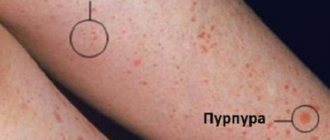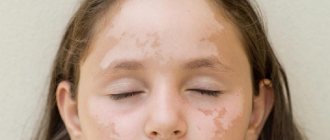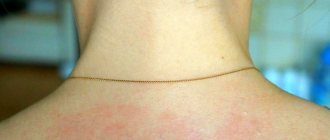Causes
Researchers still cannot establish a list of specific prerequisites for the formation of wen under the skin (photos can be seen in our material). However, there are many objective hypotheses regarding factors that can provoke the formation of such neoplasms. According to doctors, the causes of wen under the skin can be considered:
- the result of traumatic effects on tissue;
- congenital tendency to develop characteristic outgrowths;
- disorders of fat metabolism in the body;
- exposure of the skin to an abundance of ionizing radiation;
- vitamin deficiencies along with insufficient protein intake into the body;
- age-related changes in the structure of subcutaneous tissues.
As scientists note, the first place among the above factors is the genetic predisposition to the formation of wen. The risk of the formation of such neoplasms increases significantly if this has previously been noted in the parents.
What is a keratoma?
Keratoma is an senile formation on human skin. It looks like a large convex mole of a light yellow hue. Keratomas can be single or multiple; if left untreated, they can develop into squamous cell carcinoma or malignant tumors.
In older people, age-related skin changes can develop due to the activation of the papilloma virus, but it is not viral in nature. Unfortunately, experts have not identified the main causes of the appearance of tumors, so there is no exact method of preventing them. To reduce the number of keratomas, you should use traditional and folk methods of treating them.
Previously, people believed that keratomas develop due to a tendency to seborrhea, prolonged exposure to the sun, vitamin deficiency or excess consumption of fatty foods. But none of the reasons has sufficient confirmation. Based on the results of the study, senile warts develop when the patient is over 40 years old or has a genetic predisposition.
Clinical picture
What symptoms are observed when wen forms under the skin? In the early stages there are no obvious signs. A person does not notice the outgrowths because they are small in size and have an elastic structure. Moreover, their occurrence is not accompanied by pain or local fever. When pressure is applied, the growths may move.
Over time, the accumulations, which previously had a soft consistency, become somewhat denser. The fatty tissues begin to fuse with the surrounding tissues. The skin in the places where they form takes on a tight appearance. The clinical manifestation makes itself felt in the form of a feeling of heaviness at the site of tumor formation. Large fatty deposits begin to cause sagging skin and lead to stagnation in the tissues. All this looks extremely unaesthetic and forces a person to look for ways to solve the problem.
Senile keratomas
Keratoma is a collective name. It combines several types of benign skin formations that are formed from keratinized cells of the epidermis. The basis is keratinocytes.
There are several types of formations:
- Senile (seborrheic, senile or age-related).
- Solar.
- Cutaneous horn.
- Follicular.
People over 50 years of age most often develop senile age-related keratomas. Treatment is required only in cases where the formation causes discomfort to the person or there is a risk of its degeneration.
The peak incidence occurs at the age of 55-65 years. Many experts claim that among the stronger sex they occur much more often and in large quantities.
How dangerous are wen?
As noted above, wen under the skin are benign neoplasms. However, there is always a slight risk of their mutation. We are talking about cases when old growths are covered with peculiar capsules. A dense barrier is formed, beyond which antibodies are not able to penetrate to destroy pathogenic microorganisms. The internal component of the wen becomes a fertile environment for the active reproduction of pathogenic bacteria.
Such growths pose a danger when attempts are made to remove them independently. People often try to pierce or squeeze out wen under the skin. However, such actions lead to serious infections entering tissue structures. Often, rough interventions cause abnormal changes in the structure of the wen and a significant proliferation of tumors.
Operative therapy
If a wen has formed under the skin, what to do in such a situation? A popular solution is surgical excision of the tumors. The operation is as follows. The doctor makes a small incision in the skin, after which he carefully squeezes out the encapsulated growth. Then the specialist scrapes out the remains of pathological tissue and cleans the wound using disinfecting compounds. Finally, stitches are applied. After removal, wen no longer forms in the presented area. However, the consequence of surgery is the formation of scar tissue.
Electrocoagulation
This method of removing wen under the skin is quite in demand among visitors to beauty salons. The essence of the procedure is to influence the neoplasm with directed high-frequency charges of electric current. Complete healing of the wound after such an operation is observed within one and a half weeks. There are no scars or other traces of intervention left at the site of exposure. In rare cases, hyperpigmentation is observed. However, the problem disappears naturally over time.
Cryodestruction
You can remove age-related formations using liquid nitrogen. During the procedure, no anesthesia is provided; the person may only feel a slight tingling sensation. After exposure to nitrogen, a crust forms, under which the tissue heals. After a week, it disappears and in its place remains an inconspicuous pink spot. After a month it fades and becomes invisible.
Unfortunately, during the procedure it is impossible to control the destruction of all keratoma cells. Because of this, relapses are possible in the future. We can say that cryodestruction is as effective as the treatment of senile keratomas with folk remedies. The main advantage of liquid nitrogen is the speed and painlessness of removing the growth.
Endoscopy
Removal of the wen under the skin on the hands and other parts of the body occurs through the introduction of special tubes into the tissue. The neoplasm is punctured and separated from adjacent healthy structures. If the growth is large in size, they often resort to excision and scraping out individual fragments. The consequence of the operation is the formation of minor puncture marks on the skin through which the endoscopic apparatus was inserted. Within a few days, such damage heals on its own.
Methods of treatment and prevention: diet, folk remedies
To prevent the appearance of age-related keratomas, nutrition is important. It is recommended to adhere to a low-carbohydrate diet and limit animal fats. The following products are useful: black currants, rose hips, tomatoes, cabbage, raspberries, citrus fruits.
There are many methods of treatment with folk remedies, but modern medicine considers such methods of getting rid of age-related keratomas ineffective. Use tea tree oil, aloe vera, and fresh celandine juice. Mix equal parts of lemon juice and castor oil and lubricate problem areas. Use honey and garlic juice in a ratio of 1:3.
External treatment is supplemented with herbal teas. Prepare a healing drink from 3 tbsp. l. red viburnum. The berries are brewed in a thermos with 2 cups of boiling water and taken throughout the day. Another ancient remedy for aging warts is garlic and lemon juice. The components are mixed in equal quantities. The product is taken orally 5 times a day and washed down with water.
It is best to begin the fight against seborrheic keratosis at the spot stage. Even if you can’t get rid of it, you can make it less noticeable and prevent further development of skin changes.
Radio wave therapy
How else to get rid of wen under the skin? An effective solution would be to remove the tumor by exposing pathological tissues to directed radio wave radiation. The procedure helps to dissolve not only accumulations of fat masses, but also the surrounding capsule. The use of this technique allows you to avoid bleeding. The operation is absolutely painless. In addition, no stitches are required at the end of therapy. Recovery after radio wave removal of a wen takes no more than a week.
Senile keratoma: treatment with traditional and folk remedies at home
- November 12, 2018
- Diseases and conditions
- Alexandra Kurakina
Nevi, hemangiomas, warts, papillomas, atheromas and keratomas may appear on the human body. All of them are benign formations. But under certain conditions they can degenerate into cancer. Newborn babies are born with moles, the number of which increases throughout life. Some formations appear only in adulthood, for example, senile keratomas. Treatment with traditional and folk remedies allows you to quickly and painlessly get rid of these growths.
Vishnevsky ointment
The product is a popular solution not only for eliminating fatty deposits, but also for pulling out other tumors from the skin structure. The medicine contains components with a gentle effect. For this reason, the ointment is safe to use even for pregnant and breastfeeding women.
The main active ingredient of the product is atheroma. When applied to the affected areas, the component begins to draw the contents of the wen out. A slight inflammation forms in the treated area, which may fester slightly. To heal such a wound, the tissues are treated with antiseptic compounds.
Ichthyol ointment
Wen under the skin on the arm, photos of which can be seen in the publication, are quickly eliminated thanks to the use of ichthyol ointment. The product has a resolving effect. The drug has a pronounced effect on lipomas, warming local tissues. The result is a gradual dissolution of the growth. Individual components of the ointment prevent the formation of inflammatory processes. It is not recommended to apply the composition to mucous membranes. Based on this, it is better to resort to the use of other means if wen appears in the facial area.
Celandine
The sap of the plant is a rather caustic substance. When it comes into contact with the skin, an ulcerated area appears at the site where the wen forms. Over time, a hole appears here, which makes it possible to gain access to the outgrowth. This helps remove the contents of the tumor by any available method. For such purposes, you can use compresses based on the same Vishnevsky ointment or apply aloe leaves to the affected area. Despite the effectiveness of the method, you will have to endure considerable discomfort during therapy, since such treatment is accompanied by the development of a fairly pronounced pain syndrome.
Hellebore root
The resorption of neoplasms in the skin structure and the cleansing of adjacent tissues is facilitated by the use of a product prepared based on the root of the hellebore plant. The dried raw materials are thoroughly ground to obtain a powdery mass. To make a portion of the medicine, pour 50 mg of the substance into a glass of boiled water. The product is infused throughout the day. Next, the composition is carefully filtered. The infusion is consumed daily, one serving. Resorption of fatty tissues with such therapy can take many months. However, the result will be complete cleansing of tissues from fat accumulations. Before using this method, consult your doctor - hellebore is poisonous.
Garlic
Using garlic to remove wen under the skin will be a rational solution, since the juice of the plant has irritating and antiseptic properties. During local use, active stimulation of blood flow to the area of tumor formation occurs. All this contributes to the gradual resorption of the subcutaneous growth.
How to properly use the remedy for treating wen? Several cloves of garlic are ground into a paste. Such raw materials are combined with 2-3 drops of vegetable oil. The resulting mass is rubbed into the area where the growth is formed. The procedure is performed daily until the problem disappears completely.
Treatment with folk remedies for formed keratomas
Elimination of all suspicious growths on the skin must begin with a visit to the doctor. If the doctor determines the malignant nature of the formation, treatment of the senile keratoma with traditional means will be required. Traditional methods can be used only with full confidence that the growth is not pathological in nature.
You can remove keratoma at home in the following ways:
- Vegetable fats. Choose high-quality (preferably organic) sunflower, sea buckthorn, olive or fir oil. Bring to a boil and cool. Pour into a clean container. Lubricate the keratoma with oil three times a day until it completely disappears.
- Aloe juice. Choose the fleshiest leaves. Rinse them and squeeze out the liquid. The growth is lubricated with juice several times a day. To enhance the result, you can apply a compress at night.
- Lemon-garlic juice. The drug is taken orally. Eight drops are dissolved in 50 ml of water and taken three times a day for a month. To prepare the medicine, you need to mix 35 ml of lemon and garlic juice.
- Ointment. In the treatment of senile keratoma with folk remedies, vegetable oil is traditionally used. This method has successfully proven its effectiveness. To prepare a homemade ointment, you will need to mix 25 drops of fir oil with 12 tablespoons of softened butter. And also add 7 chopped bay leaves and one juniper shoot. The finished ointment is infused for 20 hours. Lubricate the growths daily 4 times a day. Use the product until the growth disappears.
Causes of wen
The initial manifestations of the disease are painless small wen on the body, the causes of which are presumably hereditary in nature, as well as some provoking factor. There are still no clear and precise reasons for their formation; most are just assumptions and hypotheses. Among the factors contributing to the development of lipomas are:
- Injuries, tissue compression
- Diseases, including hereditary ones, associated with impaired fat metabolism;
- Diabetes;
- Weakened immunity and insufficient intake of vitamins and protein into the body;
- Smoking;
- Exposure to ionizing radiation;
- Age over 40 years.
All of these factors can be considered as the causes of a wen under the skin, as well as any internal organs. The combination of one or more of them can aggravate the course of the disease, causing rapid progression and growth of the wen to large sizes. However, hereditary predisposition still comes to the fore among the causes of lipomas.
Having a sick relative in the family significantly increases the risk of lipoma formation. The opinion of doctors regarding the influence of nutrition on the growth of lipomas is divided; some believe that the increased growth of lipomas is influenced by poor nutrition and obesity, while others believe that neither lifestyle nor nutrition affects the occurrence and progression of lipomas.
- A characteristic sign of a lipoma is that when a person loses weight, the size of the lipoma does not change, sometimes even increases.
- The risk of a lipoma degenerating into a malignant tumor exists, but it is not very high. As the wen grows into connective and muscle tissues, the likelihood of transformation into cancer increases.
- The lipoma can become painful as it grows and affects nerve endings.
- The only way to prevent it is to monitor skin tumors annually and contact a surgeon in a timely manner.
Main characteristics of warts
The majority of people in adulthood develop pink, brown, flesh-colored and black spots - age-related keratomas. Neoplasms can be convex or flat, or take on a papillary shape. Over time, keratinized scales form on them.
Mostly, senile warts occur after 50 years of age, when the skin becomes less elastic, dry and less elastic. The main reason for the development of keratoma is considered to be high cholesterol levels in the blood and hereditary genetic complications. There may be several or many warts on the skin, and their number will gradually increase.
New growths can be located on the face, arms, torso, scalp, back, hips or knees. At the initial stage of development, the color of the wart is yellow, gradually it becomes convex, rough and acquires a brown tint.
For each patient, the rate of development of papillomas may differ and is associated with the possibility of friction, injury, or exposure to the sun.
Symptoms of a wen under the skin
What does a wen look like? At the initial stage, the disease is asymptomatic, but does not cause discomfort and deterioration in the patient’s quality of life. As a rule, the patient does not attach any importance to the fact that wen has appeared on the body and is in no hurry to consult a doctor about this.
Externally, a lipoma is a tumor-like limited formation of soft consistency, not fused with the surrounding tissues and skin. The skin over the wen is not changed and retains normal color and elasticity.
Important! The presence of any neoplasm on the body, including a wen, is a contraindication to massage. The massage therapist simply bypasses a single lipoma; if it is impossible to bypass the lipoma (with multiple fatty tissues on the body, under the skin), then you should refuse to massage this area or completely avoid massage. This applies not only to classic massage, but also to cupping, honey, and stone massage. In addition, when conducting physical therapy courses, you should also inform your doctor about the presence of a wen under the skin.
The so-called atheromas, which are very similar to lipomas, are also considered to be fatty tissues, which can only be accurately differentiated by a specialist based on indirect signs:
- Atheroma forms in areas of the body where there is a large accumulation of sebaceous glands, and lipoma is usually localized in areas of accumulation of subcutaneous fatty tissue.
- Lipoma has no signs of blockage of the sebaceous gland (excretory duct), which is observed in atheroma.
- To the touch, both neoplasms are almost indistinguishable, however, the lipoma is not fused to the surface of the skin and is a subcutaneous tumor, and atheroma is part of the skin.
Signs and stages of development
Age spots and warts appear on the face, scalp, neck, chest, and back. They usually do not cause physical discomfort, but can become inflamed. Then itching, pain, and sometimes bleeding occur. There are many varieties of seborrheic warts, but they almost never give rise to malignant tumors.
Some dermatologists suggest that senile warts and seborrheic keratomas be considered one disease, while other experts have the opposite opinion. Keratosis develops slowly without exposure to human papillomavirus. Neoplasms are formed from cells of the basal layer of the epidermis and rarely undergo malignant transformation.
Signs:
- First, at the site of the seborrheic keratoma, thickening of the skin of a dark yellow or brown color appears.
- The smooth spot gradually enlarges and darkens.
- The diameter of the formation is 2–10 mm.
- Sometimes larger lesions appear - more than 2 cm.
- The number ranges from single spots to multiple foci numbering hundreds of elements.
At the next stages of development of seborrheic keratosis, nodules and papules of light brown or darker color form in the areas of age spots. They are slightly raised above the skin; but there is no “corrugated” surface yet.
The keratotic stage of a senile wart is easily recognized by the fatty horny scales covering round or oval plaques of brown, yellowish-black color. They rise above the surface of the skin by several millimeters, the edges are clearly defined. When the scaly layer is removed, the bleeding surface is exposed.
Over time, senile warts grow, darken, and the layer of fatty scales increases to 1–2 mm. Sometimes the boundaries of the formation become blurred, as in melanoma. One of the later stages of keratoma development is horny. Severe keratinization occurs, the wart takes the shape of a cone, and a skin horn appears.
Among the probable causes of seborrheic keratosis, scientists name genetic predisposition, excess ultraviolet radiation and exposure to harmful chemicals. The process of skin changes can be aggravated by poor nutrition, deficiency of vitamins, antioxidants, and excess of harmful fats. It is possible that seborrhea has a negative effect - increased secretion of sebum due to disruption of the sebaceous glands.
Diagnosis of wen
If a lipoma is suspected, the scope of diagnostic tests is reduced to taking a tissue biopsy from the lesion for histology.
If it is necessary to determine the size and boundaries of the lipoma, as well as in difficult to diagnose cases, additional examination (ultrasound, X-ray, as well as CT and MRI) is prescribed. As a rule, these methods are used to diagnose lipomas of internal organs, joints, muscles, etc.
Getting rid of wen using folk methods is not only useless, but also extremely dangerous. The lipoma capsule should be removed, not the contents, otherwise the lipoma will constantly appear again. All methods of folk treatment with compresses and lotions only soften the top layer of skin, and inflammation and infection can occur. With self-treatment, a scar may form, and it is also quite difficult for a non-professional to “pull out” the contents of the wen, since it is difficult to determine the boundaries of the wen capsule.
How to get rid of a wen on the body - lipoma treatment
The most common treatments for lipomas are:
- Puncture-aspiration;
- Laser correction;
- Radio wave surgery method.
Laser removal of fatty deposits on the body is an effective method, widely used in practice in modern cosmetic surgery clinics. The advantage of this method is its speed, low likelihood of developing postoperative complications and the absence of tissue defects at the site of lipoma removal.
The essence of the method is the targeted effect of ultrashort wave radiation on the affected area under control of the intensity and duration of irradiation. This ensures layer-by-layer separation of pathological tissues in the lesion without damaging surrounding healthy structures.
The indication for removal of a lipoma is rapid growth, the occurrence of pain in the lipoma, when it creates a cosmetic defect (facial fat on the face, on the head), and also when it interferes with surrounding organs and tissues.
To get rid of wen on the body, the second modern and high-tech method of treating lipomas is radio wave removal . In this case, the removal of the wen occurs due to the exposure of it to radio wave radiation, which heats the fat cells of the tumor. When heated to a high temperature, lipoma cells are gradually separated from the skin and removed. This is a low-traumatic, bloodless method that has an additional antiseptic effect on the surgical area.
Using the puncture-aspiration method for lipoma removal involves inserting a special device into the wen followed by suctioning out the fat cells. The procedure is performed under the control of a microvideo endoscope and is indicated for small lipomas. When using this method, subsequent recurrence of the disease is possible, since there is a high probability of retaining remnants of pathological adipose tissue in the capsule of the aspirated lipoma.
Any of the listed methods is highly effective in treating lipomas. The decision on how to remove wen on the body must be made together with the attending physician, having assessed all the benefits, possible complications and side effects of treatment.
Have you ever noticed patches of skin with a strong yellow tint on your face, especially in the area around the inner corners of your eyes? This can be a critical sign that cholesterol levels are extremely high, and in some cases it can be an early indicator of primary biliary cirrhosis, a liver disease that causes cholesterol levels to spike.
How to Get Rid of Xanthelasma These yellow, cholesterol-filled spots form due to excessive levels of low-density lipoprotein (LDL or “bad” cholesterol) in your body. This type of cholesterol is extremely bad for your heart and can cause problems such as high blood pressure, heart attack or stroke.
Causes and risk factors More women than men suffer from this disease. People aged 30 to 60 are also at higher risk. A genetic component, such as inherited high cholesterol or familial hypercholesterolemia, also increases the risk of developing this condition.
Other causes and risk factors include: high levels of LDL or bad cholesterol high levels of triglycerides low levels of high-density lipoprotein (HDL or "good" cholesterol) primary biliary cirrhosis, which can spike cholesterol levels hyperlipidemia diabetes high blood pressure obesity poor diet and sedentary behavior life
Symptoms of Xanthelasma
The two main symptoms are: Yellow-orange patches on the skin. These plaques are flat on top, with distinct edges.
Preventing Xanthelasma: Balancing LDL and HDL levels. Reducing triglyceride levels in the blood. Regulates blood lipid levels, including fatty acids. Eating organic and healthy food. An active lifestyle and vigorous cardiovascular workouts that will help burn fat.











